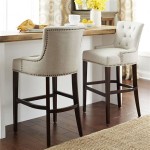Leather Couch with Fabric Chairs: A Guide to Mixing Textures and Materials in Living Room Design
Integrating a leather couch with fabric chairs offers a compelling way to introduce depth and visual interest into a living room. This design choice allows for a blend of textures, colors, and styles, creating a space that feels both sophisticated and inviting. Successfully combining these elements requires careful consideration of several factors, including color palettes, furniture styles, and the overall aesthetic of the room.
Key Considerations When Pairing Leather and Fabric
Several key aspects should be considered when deciding to incorporate both leather and fabric furniture within the same space:
- Balance and Proportion: A large leather couch can be balanced with smaller, lighter fabric chairs to avoid visual heaviness.
- Color Coordination: Harmonizing the colors of the leather and fabric is crucial. Complementary or analogous color schemes can create a cohesive look.
- Style Compatibility: Mixing furniture styles can add personality, but ensure there's a unifying element, such as shared lines or similar decorative details.
Choosing the Right Leather Couch
The leather couch often serves as the focal point in a living room. Selecting the right type of leather and style is essential for creating the desired ambiance.
- Leather Types: Options range from full-grain leather, known for its durability and natural markings, to corrected grain leather, which offers a more uniform appearance.
- Couch Styles: Consider the overall style of the room. A Chesterfield sofa lends a classic touch, while a sectional provides a more contemporary feel.
- Color: Neutral leather colors like brown, black, or gray offer versatility, while bolder colors can make a statement.
Selecting Complementary Fabric Chairs
Fabric chairs provide an opportunity to introduce pattern, texture, and a variety of colors to complement the leather couch.
- Fabric Types: Explore various fabrics like linen, velvet, or cotton, each offering a distinct texture and level of formality.
- Chair Styles: Armchairs, accent chairs, or even recliners can be incorporated depending on the room's function and desired comfort level.
- Pattern and Color: Consider incorporating patterns that complement the leather couch's color. Solid-colored chairs can also create a balanced look.
Creating a Cohesive Look with Rugs and Accessories
Rugs and accessories play a crucial role in tying the leather and fabric elements together and completing the overall design.
- Rugs: A rug can anchor the seating area and create a sense of unity. Choose a rug that complements both the leather and fabric colors and patterns.
- Throw Pillows and Blankets: These accessories offer opportunities to introduce additional colors and textures, bridging the gap between the leather and fabric furniture.
- Wall Art and Decor: Consider wall art and decorative items that reflect the overall style of the room and enhance the cohesive aesthetic.
Balancing Visual Weight and Proportion
Achieving balance within the room is essential for creating a harmonious space. Consider the visual weight of the furniture pieces.
- Scale and Size: Ensure the furniture pieces are appropriately sized for the room. Avoid overcrowding the space.
- Placement: Strategically position the furniture to create a balanced layout. Avoid placing all heavy pieces on one side of the room.
- Visual Interest: Varying the heights and shapes of the furniture can add visual interest and prevent the room from feeling monotonous.
Color Palette Considerations
A well-chosen color palette is essential for creating a harmonious and visually appealing living room.
- Complementary Colors: Using colors opposite each other on the color wheel can create a dynamic and vibrant look.
- Analogous Colors: Choosing colors that are adjacent to each other on the color wheel can result in a more calming and cohesive feel.
- Neutral Palettes: Utilizing neutral colors for the larger furniture pieces, such as the sofa and chairs, allows for greater flexibility with accent colors and accessories.
Maintaining and Caring for Leather and Fabric Furniture
Proper care and maintenance are crucial for preserving the longevity and appearance of both leather and fabric furniture.
- Leather Care: Regularly clean and condition leather furniture to prevent cracking and maintain its suppleness.
- Fabric Care: Vacuum fabric furniture regularly and address spills promptly to prevent staining. Consider using fabric protectant sprays for added protection.
- General Cleaning: Dusting and vacuuming the entire living room regularly will help maintain a clean and inviting environment.
Adapting the Look to Different Interior Design Styles
The combination of a leather couch and fabric chairs can be adapted to complement a variety of interior design styles.
- Modern: Opt for clean lines and neutral colors for both the leather couch and fabric chairs.
- Traditional: Choose a classic leather Chesterfield sofa and pair it with patterned fabric armchairs.
- Bohemian: Incorporate a rich brown leather couch with textured fabric chairs and colorful throw pillows.
Ultimately, the successful integration of a leather couch with fabric chairs hinges on careful planning and consideration of these key elements. By thoughtfully selecting pieces that complement each other in terms of style, color, and texture, one can create a living room that is both visually appealing and functionally comfortable.
:strip_icc()/102355260-80861456a9fb4596836629e5d155b6eb.jpg?strip=all)
Leather Sofa Outlet And Fabric Chairs

15 Accent Chairs That Go With Brown Leather Couch

How To Mix Leather And Fabric Furniture

26 Best Mixing Leather And Fabric Ideas Living Room Decor Inspiration Designs

Living Room Furniture Mixing Leather And Fabric Colorado Style Home Furnishings

Decorating Around A Leather Sofa Centsational Style

Can You Mix Leather And Fabric Furniture

Living Room Furniture Mixing Leather And Fabric Colorado Style Home Furnishings

How To Mix Leather And Fabric Furniture

Accent Chairs To Go Top With Leather Sofa








